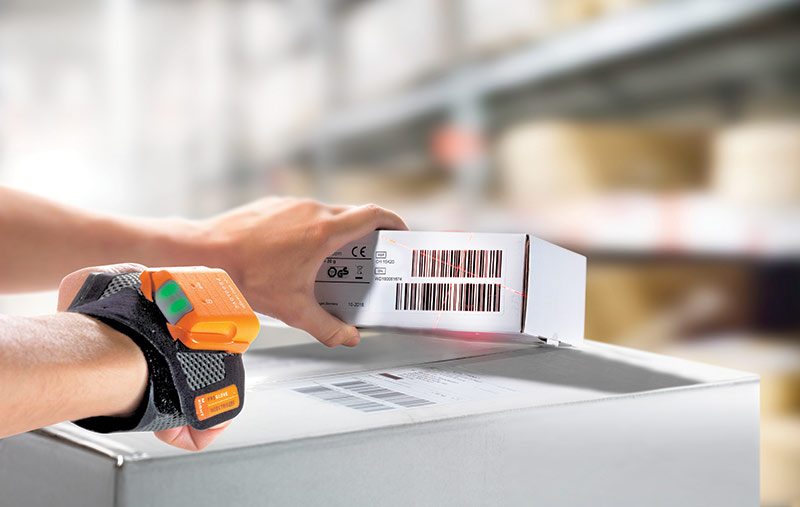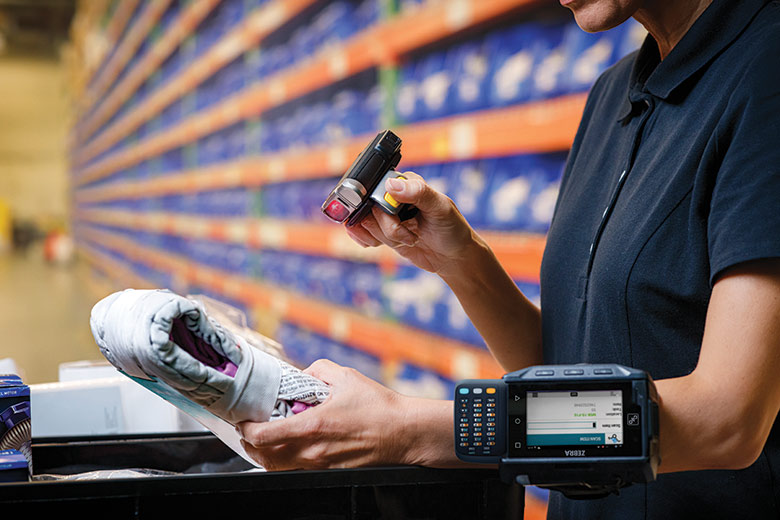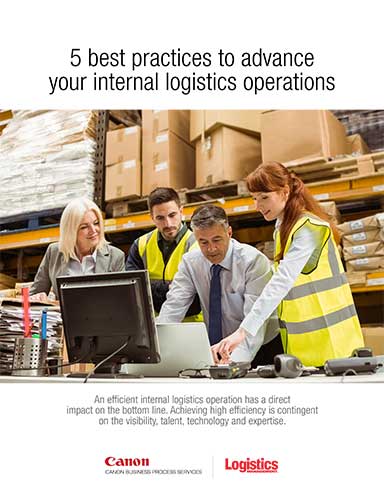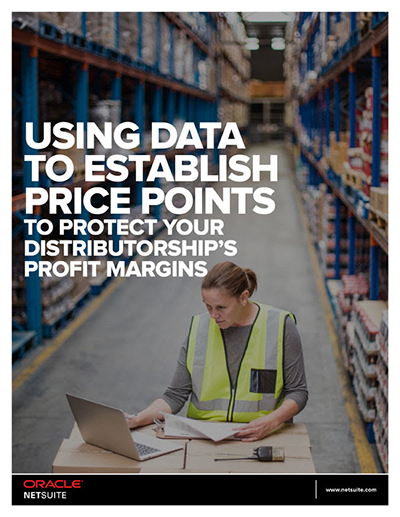The Warehouse Data Capture Evolution
Newer forms of data capture technology are starting to see use and promise more operational visibility with fewer manually triggered data collection tasks. This range of ADC solutions can help diverse DC fulfillment processes, from tracking goods, to knowing their condition, or gaining insights on cycle times and throughput.
Bar codes, and with them, bar code data collection processes and gear, have been around since the 1970s, but that doesn’t make the technology outdated. Most warehouse and distribution processes, or for that matter shipment tracking, continue to rely on bar code scanning to track orders and inbound material flows.
The relevance of bar coding can be seen in the segment’s ongoing growth. According to Grandview Research, the 2D bar code market—devices with an imaging engine that can read 2D codes or linear ones—is expected to expand at a compound annual growth rate (CAGR) of 6.7% from 2021 to 2028.
However, other technologies have entered the data capture landscape. Systems that use radio frequency identification (RFID) tags and readers are well established, and real-time locating system (RTLS) solutions that leverage technologies like ultrawideband (UWB) or other types of beacons or tags are also now catching rapidly. The RTLS market, according to Allied Market Research, will expand at a CAGR of 25.7% from 2021 to 2030.
The upshot is bar coding is here to stay, though newer data capture solutions have some momentum.
“Human-triggered bar code data capture will remain a go-to technology for the foreseeable future in many visible use cases,” says Allan Melling, senior director of product management with Zebra Technologies, which offers a range of data capture solutions. “Bar code is tightly integrated into a broad variety of functions across diverse markets—including manufacturing, retail, logistics and health care.”
Bar code scans, of course, can be done automatically by fixed-position readers arranged in a “scan tunnel” configuration or over a conveyor, but other technologies such as passive RFID tags, which can be inlays on labels, also can be done by reader arrays in key points in a material flow, like near receiving.
But it’s a big leap to think that DC operations will move entirely to everything being tagged and read by tech like RFID or advanced computer vision, while being moved and handled by fixed automation or robots with no need for human labor, or some human-triggered data collection processes.
“In materials handling sectors, ‘dark warehouses’ are being discussed as the future direction and all sides involved are trying to reduce human footprints,” says Melling. “However, for the near term, completely autonomous supply chains are very far away. Robotics, machine vision and locating systems will supplement human interactions—improving accuracy and reducing labor content. Currently bar codes are by far the majority of goods tracking systems and will be for the near future until the entire supply chain systems embrace other technologies.”
Augmenting bar codes
The newer hands-free “locationing” tech can be applied selectively at key points in a distribution chain, adds Melling. For example, RFID readers in a shipping area can precisely and automatically track outbound pallets for improved staging and loading, or in retail settings, to support fast and accurate buy-online, pick-up in store (BOPIS) workflows, says Melling.
“Bar coding and RFID or other locationing systems are likely to co-exist for the foreseeable future,” Melling says. “Locationing and other RFID technologies are best suited and are being adopted in those applications where data capture automation and increased accuracy drive enough incremental value to override the increased cost. This can include high-accuracy inventory tracking for BOPIS and other applications as well as location tracking in warehouses and freight yards, for example.
“Also, it’s important to remember that in nearly all RFID applications, bar code is still used as a backup, because the incremental cost of a bar code is close to zero,” Melling adds. “RFID and bar codes have similar process flows. If a label is printed with a bar code—that label can also contain an RFID inlay to be encoded and flow along in the process, allowing both bar code scanners and RFID readers to obtain the needed information.”
To figure out which data capture technology best suits a process, Melling advises to consider factors such as the volume of data capture needed, and whether the operation is after more than a simple “ID” of a material or asset like a tote.
“There are a number of data capture technologies in the market today—traditional bar codes, 2D bar codes, RFID, Bluetooth, other radio technologies such as UWB, and, increasingly, computer vision paired with artificial intelligence,” Melling says. “All have a place in the supply chain and materials handling world. Which technology is best depends largely on the cost constraints of the application and the type of information needed—simple identification, location or condition factors.”
Bar code remains unchallenged as the simplest and lowest cost means of identifying an object, says Melling, while location needs can be well served by RFID or other radio technologies. The need for condition information is increasingly being met with computer vision applications that directly inspect an object of interest, Melling adds.

“These are only rules of thumb however, and there are exceptions,” Melling says. “For example, if you have an identification application that is well served by identifying large groups of objects simultaneously, RFID can be a great fit, as long as the benefits outweigh increased technology costs.”
Another relatively new data capture frontier is the use of self-flying drones with on-board imagers to read bar codes and perform inventory counts autonomously. According to Raffaello D’Andrea, founder and CEO of Verity AG, a drone solution provider, self-flying drones bring payback by automating inventory counting tasks, and making counts more frequent and accurate, leading to fewer unexpected issues with low stock. Verity’s drones are already being used in DCs by companies, including logistics services providers such as DSV and Performance Team.
“There are three key, quantifiable components to the business case that drive ROI,” D’Andrea says. “First and probably most obvious is the labor savings that comes from automating the manual scanning process. Our clients have also quantified considerable savings through increased productivity and the reduction in oversells and stock outs. In these categories alone, Verity’s clients typically see payback within the first year.”
Voice and wearables
One of the biggest evolutions in data capture is the use of voice-directed solutions and other forms of data capture that make use of wearables, such as Bluetooth headsets and ring scanners.
Since voice and other wearables don’t require warehouse associates to pull out a handheld device and point it at a bar code to capture data, the productivity benefits start with the “hands-free” nature of these technologies.
When it comes to voice solutions, today’s systems can use Bluetooth devices like ring scanners to incorporate needed bar code scanning as part of voice-directed workflows, says Scott Deutsch, president of EPG Americas, which offers its Lydia voice system.
“Years ago, customers were confronted with the decision of having to choose between a handheld scanner or voice-only device, but that’s no longer the case,” Deutsch says. “Modern voice solutions fully embrace scanning as a verification step and in industries tracking serial and lot numbers, it’s a process improvement requirement. The key for the customer is to focus on optimizing the workflow process and measuring overall worker performance no matter what technology options they select.”
Other changes in voice solutions include better voice recognition software, as well as use of Cloud technology for deploying the system and accessing performance dashboards. There’s also a range of device hardware options for voice, adds Deutsch, including Android devices, and in EPG’s case, a vest-based device with speaker and microphone built in.
“Increased computing power and the ability to deliver voice solutions with modern secure Cloud platforms has dramatically streamlined the effort to enable workers who speak various languages to perform better due to modern voice recognition,” says Deutsch.
Voice-enabled equipment has improved significantly, most businesses have moved from wired headsets to Bluetooth wireless headsets. Now with the additional option of Lydia VoiceWear vests, which eliminates the need for headsets completely, we are seeing happier workers across the warehouse space.”
Wearable device technology, when used to execute a warehouse task, can also generate insights on process efficiencies and task cycle times. In other words, not only do wearables keep workers hands-free, they generate data that can be analyzed.
For example, ProGlove offers a lightweight wearable device and scanner housed on the back of a glove. The gloves allow workers to focus on materials handling tasks, says Ilhan Kolko,
ProGlove’s chief product officer, and offer visual (the devices have a screen), acoustic and haptic feedback to reduce errors and generate data points including total scans, total time spent scanning, steps taken, time to initiate a scan and time to process a scan. ProGlove’s software can analyze the data to spot trends.

“Our devices leverage various sensors to collect meta datapoints that we can refine with our software solution to narrate the true story of the shop floor,” says Kolko. “We need solutions that recognize patterns, contextualize information to identify potential implications, and simply make things better.”
RTLS sweet spot
RTLS can achieve a more automatic, continuous view of where materials or containers are within a DC’s process flow, says Steven R. Schauer, IoT systems engineer with Barcoding Inc., a reseller and integrator of data capture solutions. While there are different types of RTLS, a leading type are “RAIN” RFID read point solutions, adds Schauer.
RAIN technology—backed by members of an industry group called the RAIN Alliance—uses passive, UHF RFID tags or inlays to capture data at critical read points in a material flow and move that data to the Cloud to support analytics.
The “N” in the RAIN acronym (RAdio frequency IdentificatioN) is a nod to the concept that these systems should not just capture data, but also move it to a Cloud network for analysis.
RAIN RFID systems can be deployed in the form of dock-door portals, or as reader tunnels on conveyors, with another application being overhead the RAIN RFID infrastructure, which captures data from materials or assets moving underneath, explains Schauer. These read points are paired with intelligent middleware to support analytics.
“This provides a much-needed, real-time dashboard of information that companies can use to ensure they have the right products, and know the locations, so they can be certain products are in stock and positioned to fill orders efficiently,” Schauer says.
With analytics attached to RTLS, companies not only gain more granular location data, they can look to improve efficiencies by analyzing dwell times or other process trends, while also passing data to enterprise systems or a warehouse management system (WMS).
“It’s not just about knowing the existence and quantity of assets, but also knowing important time-based trends, like whether there are specific times within a shift when assets are sitting too long in a certain workflow step, or whether specific assets are sitting too long in a storage location. You can also examine what is the average intake and outflow of goods on a given day, and generally, look for areas that can be proactively assessed and addressed.”
RTLS, Schauer says, complements existing bar code data collection with labor-saving automated data capture at key points, while feeding analytics.
“Applications already utilizing tried and true bar code systems have at least a baseline for data capture and a semblance of a process workflow,” Schauer says. “When integrated with RTLS solutions and relevant analytics, this adds an automated, hands-free element to the application that truly elevates the application to being a complete A-to-Z view of the life and journey of an asset or material.”













